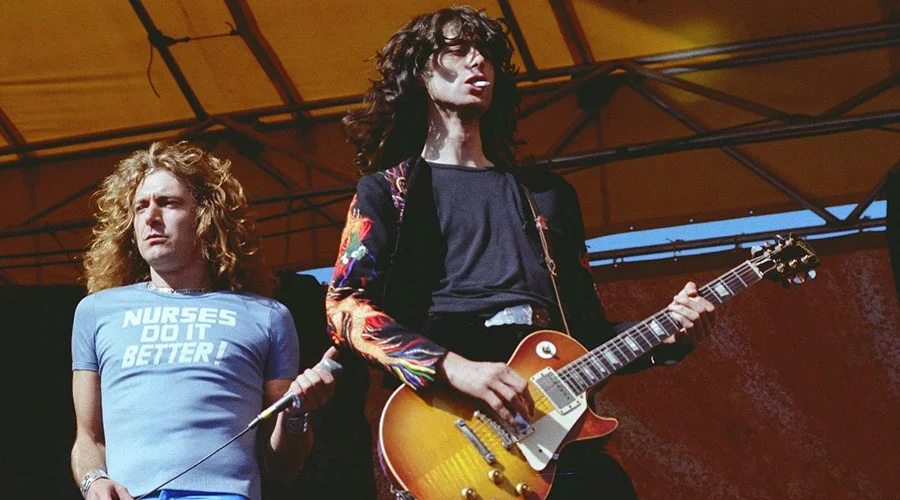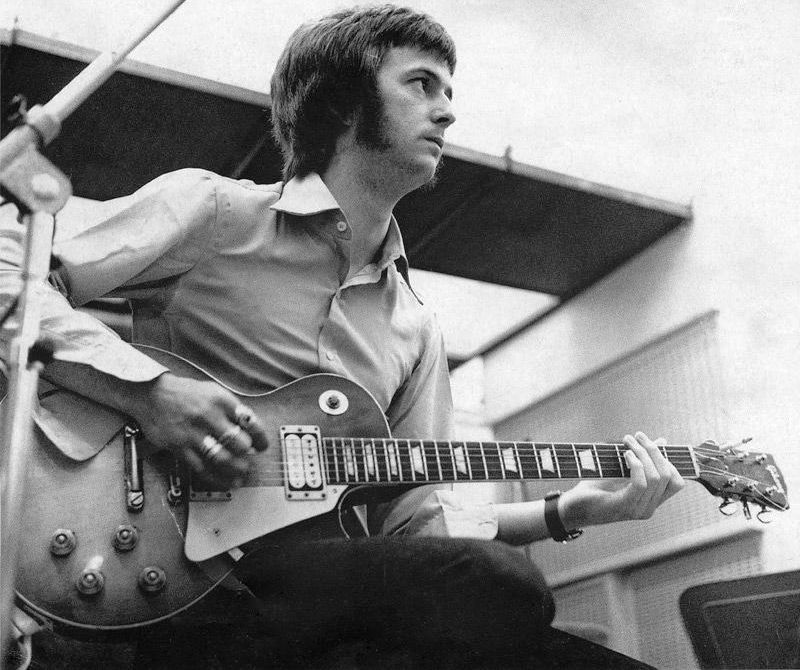The Gibson Les Paul is more than just a guitar; it’s a cornerstone of rock and roll history. But the journey from Les Paul’s initial vision to the instrument that would grace countless stages wasn’t always smooth. Let’s delve into the fascinating story of the Les Paul’s evolution:
Early Inspiration and Innovation (1930s-1940s):
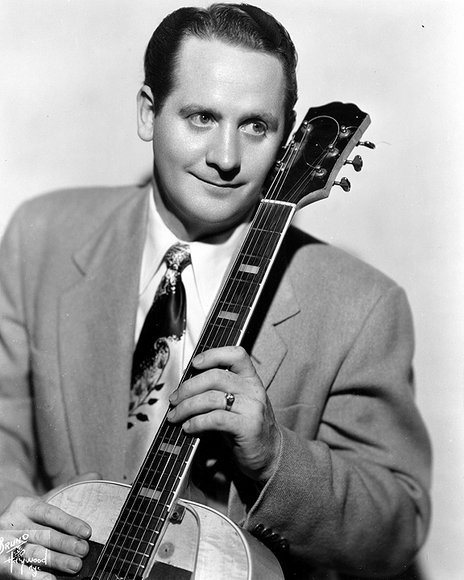
- Guitarist Les Paul was an early innovator, experimenting with electric guitars even before they were commercially viable. Inspired by the limitations of hollow-body acoustics in loud venues, he sought a design with better sustain and less feedback.
- Les Paul’s “The Log” was a revolutionary prototype featuring a solid wood body for increased volume. Though never commercially produced, it planted the seed for the Les Paul design.
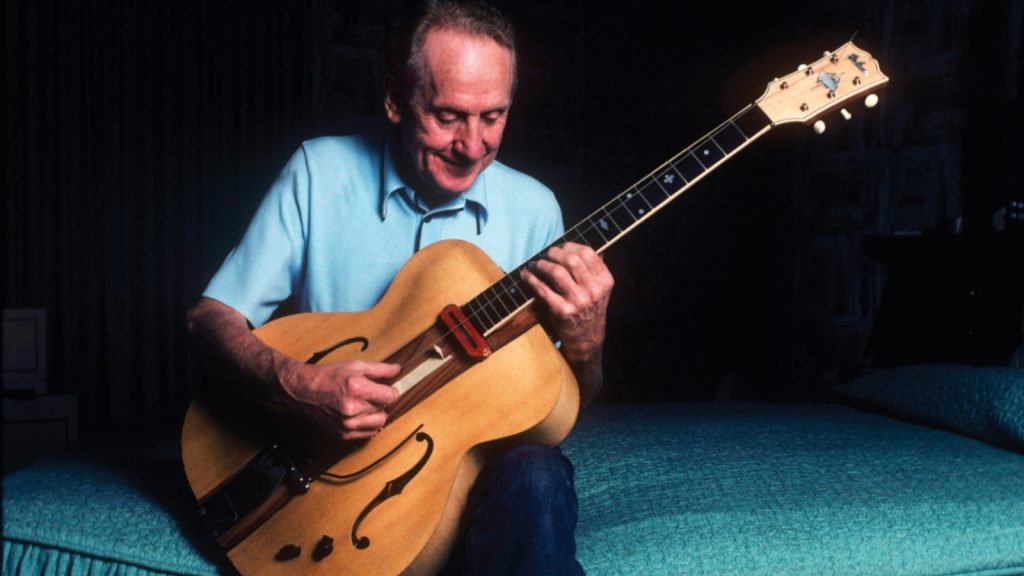
Collaboration and the Birth of an Icon (1950s):
- In the early 1950s, Gibson saw the potential of the solid-body electric guitar market pioneered by Fender. They approached Les Paul for endorsement, and with his input, the first Gibson Les Paul – the Goldtop with P-90 pickups – was born in 1952.
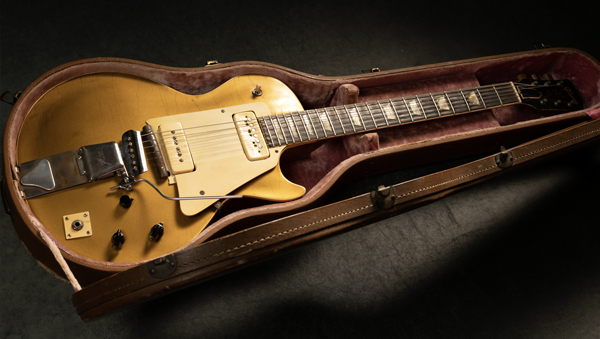
- The Les Paul Standard, featuring the now-iconic sunburst finish and humbucker pickups for reduced noise, debuted in 1958. However, its initial price tag and weight led to sluggish sales.
A Rocky Patch and Reemergence (1960s-1970s):
- Despite its innovative features, the Les Paul Standard was briefly discontinued in 1960, with Gibson focusing on the SG design.
- The emergence of blues and rock guitar heroes like Jimmy Page and Eric Clapton in the late 60s and 70s reignited interest in the Les Paul. Its tonal versatility and sustain became a perfect match for the heavier sounds of these genres.
A Legacy Secured and Continued Evolution (1980s-Present):
- Since its reemergence, the Gibson Les Paul has remained a top choice for professional and amateur guitarists alike.
- Countless variations have been produced, catering to different playing styles and budgets. From classic standards to modern high-performance models, the Les Paul continues to inspire musicians across generations.
Slash and the Les Paul: A Match Made in Rock & Roll Heaven
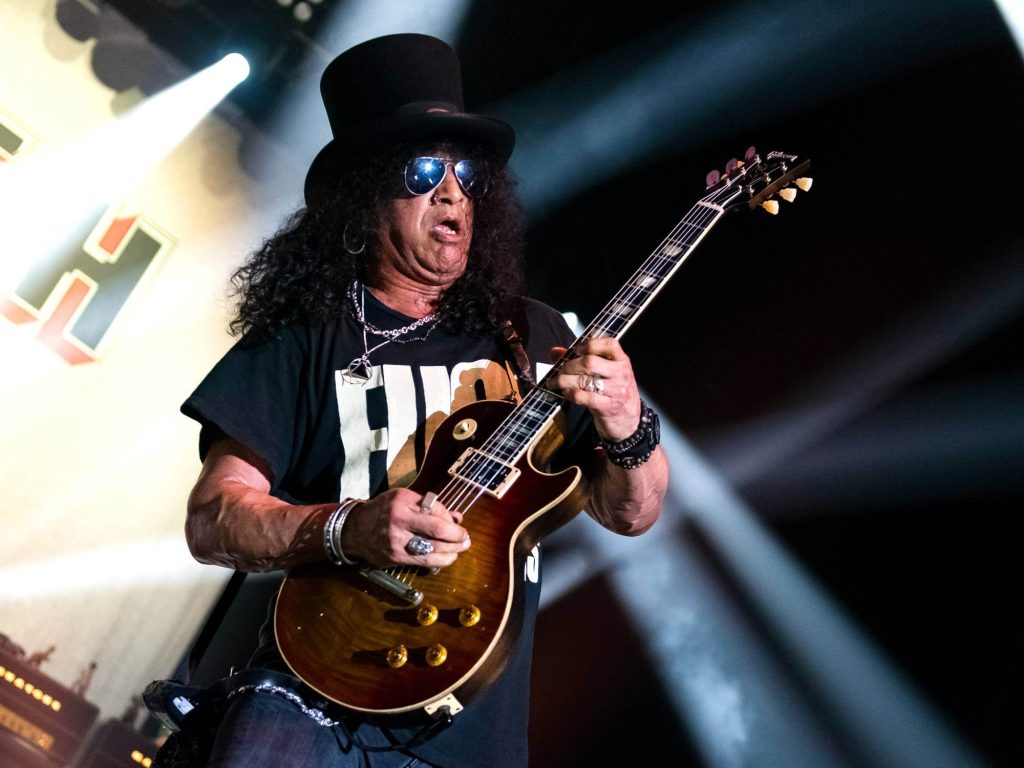
Slash. Top hat. Cigarette dangling from his lips. And, of course, the iconic Gibson Les Paul slung low across his shoulders. The two are practically synonymous. But how did this legendary guitarist settle on his signature instrument?
Early Experimentation and Influences (1970s):
- Slash’s musical journey began in his teens, heavily influenced by the hard rock sounds of Aerosmith and Led Zeppelin. These bands prominently featured Les Paul players like Jimmy Page and Joe Perry, undeniably shaping Slash’s early guitar heroes.
- Before the Les Paul, Slash experimented with various guitars, including replicas of Les Pauls by Kris Derrig and Max Baranet. While these instruments served him well initially, they weren’t quite the “right fit.”
Finding “Appetite” with a Factory Second (1980s):
- The turning point came in the late 1980s when Slash was on the road with Guns N’ Roses. He contacted Gibson, seeking a Les Paul that could deliver the power and sustain he craved.
- Gibson sent him two “factory second” Les Paul Standards with three-piece maple tops and a slightly duller finish compared to the standard sunburst. These imperfections, however, didn’t matter to Slash.
Love at First Play:
- As Slash himself recounts, “I loved the weight of it. It felt solid. I liked the way the neck felt. Obviously, I liked the way it looked and the sound was consistent…” These Les Pauls became his main stage guitars, eventually nicknamed “Af Appetite” and “Snakepit” after being refinished with his signature top hats and skulls.
Beyond the Look – The Tonal Match:
- It wasn’t just the aesthetics that drew Slash to the Les Paul. The guitar’s mahogany body with a maple top offered a perfect blend of warmth and brightness, ideal for his searing leads and rhythm work. The humbucker pickups provided the high output and sustain needed to cut through the band mix.
A Lasting Legacy:
- Slash’s unwavering dedication to the Les Paul has cemented its status as a rock and roll icon. His signature sound, a combination of aggressive riffs, soulful blues bends, and soaring solos, is undeniably intertwined with the instrument.
From Strats to Stustain: Why Joe Bonamassa Fell for the Gibson Les Paul
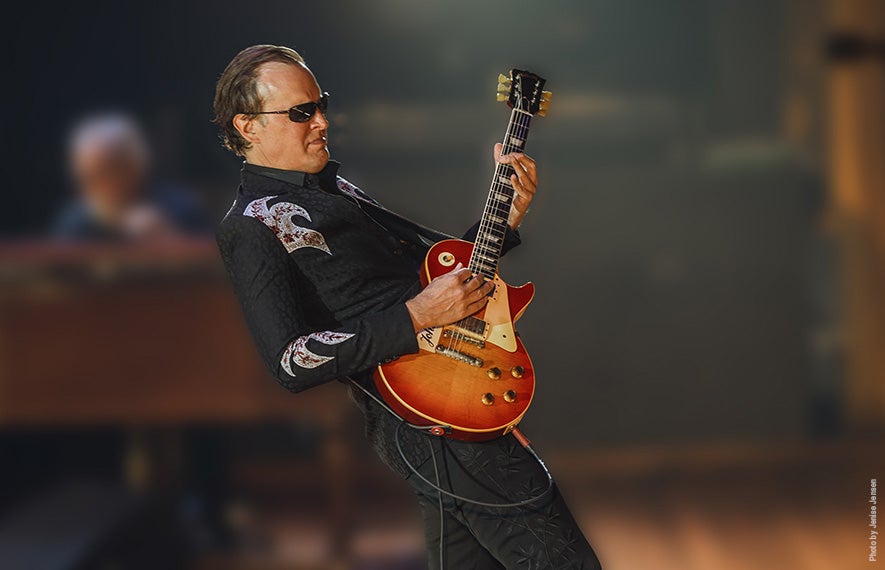
Joe Bonamassa’s name is synonymous with scorching blues licks and a tone as smooth as aged bourbon. But for a part of his career, his weapon of choice wasn’t the now-iconic Gibson Les Paul – it was the Fender Stratocaster. So, what made him switch to the Les Paul and become one of its most prominent modern advocates?
A Revelation in Volume Control (Early 2000s):
- Bonamassa, heavily influenced by Stevie Ray Vaughan, initially leaned towards Stratocasters for their bright twang and versatility.
- A turning point came during a live performance where he was using his Strat for signature volume control swells. An audience member likened his sound to “Stevie Ray playing a violin.”
Seeking a Unique Voice (Early 2000s):
- This comment struck a chord with Bonamassa. He realized the inherent sonic limitations of the Strat in achieving the thick, singing sustain he desired for his blues-rock style. He craved a guitar that wouldn’t be instantly compared to other guitar heroes.
A Gradual Shift and Gibson’s Versatility (Early 2000s – Present):
- Bonamassa didn’t make an overnight switch. He began incorporating Gibson ES-335s and Les Pauls into his recordings, like the critically acclaimed “You and Me” and “Sloe Gin.”
- He discovered the Les Paul’s surprising versatility, capable of delivering not just heavy rock tones but also smooth jazz and bluesy cleans when played with a lighter touch and adjusted volume knob.
The Right Tool for the Job (Present):
- Today, Bonamassa primarily uses custom Gibson Les Pauls built to his specifications. These guitars offer the perfect blend of power, sustain, and responsiveness for his signature style.
- He emphasizes the importance of finding the “right tool” for the job. The Les Paul simply allows him to express his musical vision more effectively than any other guitar.
Beyond the Tone – The Emotional Connection:
- While tone is crucial, Bonamassa has also spoken about the emotional connection he feels with the Les Paul. He admires its rich history and the lineage of legendary guitarists who’ve wielded it before him.
The Les Paul’s legacy is undeniable. Its sound has shaped countless musical genres, and its timeless design continues to captivate guitarists worldwide.
Do you have a favorite Les Paul moment in music history? Share your thoughts in the comments below!



